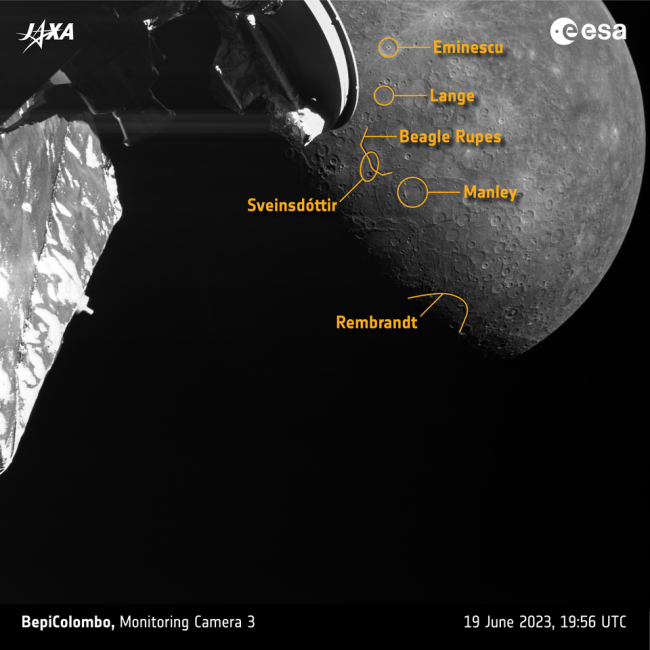Mercury, the closest planet to the Sun has been a challenge to explore and examine because of its closeness to the Sun. This is the second craft to orbit the planet after NASA’s MESSENGER probe, which orbited the planet from 2011 to 2015. BepiColombo is a joint venture between European Space Agency (ESA) and the Japan Aerospace Exploration Agency (JAXA). The latest flyby was 3rd of the 6 planned flybys of the planet. The team has released a short video composed of 217 images taken during the flyby.

Photo taken by BepiColombo during its 3rd flyby of Venus
Pic Credit: European Space Agency/ Japan Aerospace Exploration Agency
The closest approach took place at 19:34 UTC (21:34 CEST) on 19 June 2023, about 236 km above the planet’s surface, on the night side of the planet.
…
Approaching on the nightside of the planet, a few features started to appear out of the shadows about 12 minutes following the closest approach, when BepiColombo was already about 1800 km from the surface. The planet’s surface became more optimally illuminated for imaging from about 20 minutes after close approach and onwards, corresponding to a distance of about 3500 km and beyond. In these closer images, a bounty of geological features are visible, including a newly named crater.
…
While not apparent in these flyby images, the nature of the dark material associated with Manley Crater and elsewhere will be explored further by BepiColombo from orbit. It will seek to measure just how much carbon it contains and what minerals are associated with it, in order to learn more about Mercury’s geological history.
The next Mercury flyby will happen in September 2024 but the next next long solar electric propulsion ‘thruster arc’ is planned to start early August until mid-September which will help BepiColombo in Braking against the gravitational pull of the Sun. During the lifetime of the project, the module will have completed 15,000 hours of solar electric propulsion operations which will allow it to perform 9 planetary flybys in total — one at Earth, two at Venus, and six at Mercury.
The more we explore our celestial neighbors, the more information we will have before we start working towards space colonization and building settlements. Although, I don’t think that Mercury will be a contender in the near future for a settlement, unless we find a rare mineral or something over there.
Source: Slashdot: New Video Shows a Flyby of the Planet Mercury – with AI-Assisted Music
– Suramya